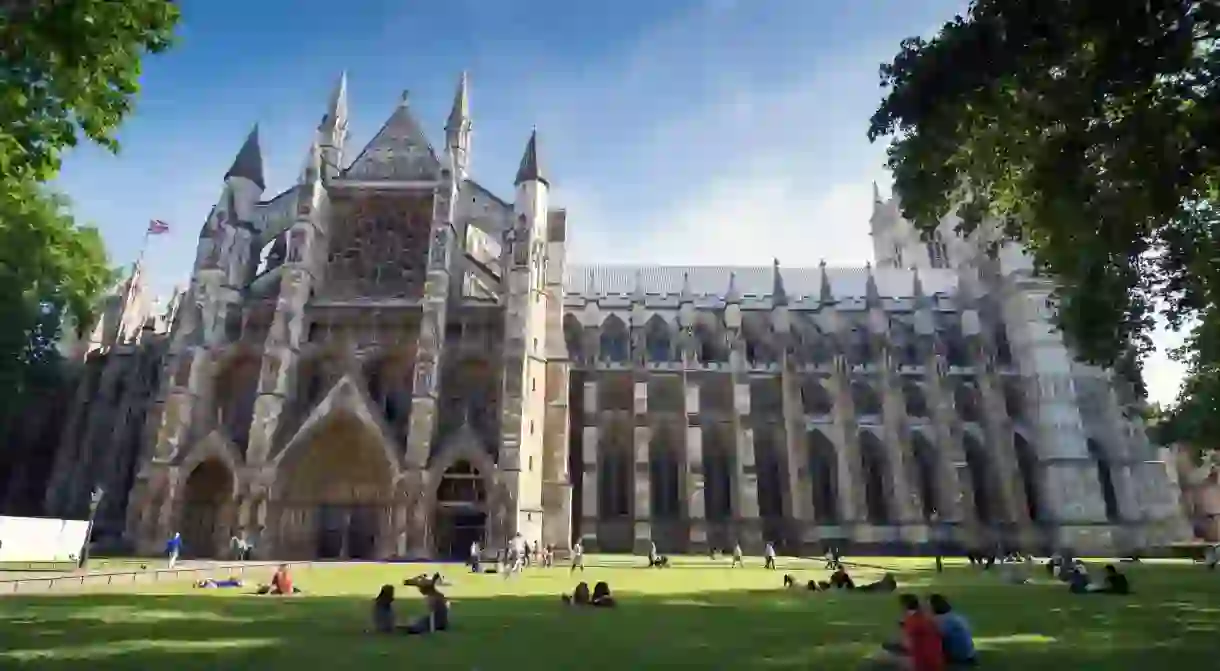The 8 Oldest Churches in London

High on the list of cities to visit when it comes to history, London is full of architecturally intriguing churches and cathedrals – some even dating back to the first millennium. Here are the eight oldest.
Packed with fascinating stories of eras past, the historic churches of the British capital have been witness to some of the most tumultuous periods of London’s history – from the Great Fire of London in 1666 to the Blitz in the Second World War. To explore the oldest churches in London is to truly step back in time. Just be sure to look out for some familiar movie locations – and some famous (buried) residents.
All Hallows by the Tower
Church

One of the highlights of a visit to All Hallows by the Tower is undoubtedly exploring the Crypt Museum underneath the original Saxon building, which houses Roman and Saxon artefacts, along with ancient registers dating back as far as the 16th century. Billed as the City of London’s oldest church, All Hallows by the Tower was founded by the Abbey of Barking in 675 and, thanks to its proximity to the Tower of London, enjoyed a rather macabre purpose: this was where beheaded bodies from the Tower of London were brought to be buried, including Thomas More in 1535, after refusing to acknowledge King Henry VIII as head of the Church of England. On a happier note, the sixth President of the United States, John Quincy Adams, married here in 1797. The nearest underground station to All Hallows by the Tower is Tower Hill.
St Olave's Church, Hart Street
Church
Famed as the resting place of diarist Samuel Pepys, St Olave’s Church, Hart Street, is one of the few medieval churches to have survived the Great Fire of London in 1666. Indeed, Pepys is largely credited with saving St Olave’s from the fire by ordering the pulling down of wooden buildings close to the church. Pepys is now buried in the nave of the church, while an ornate memorial to him marks the location of a former outside stairway that he had added from the Royal Navy Offices, allowing the diarist and naval administrator to go to church without getting wet in the rain. Dating from 1450, the church’s exterior is built in rather modest Perpendicular Gothic style, but be sure to look out for the grisly entrance arch to the churchyard, adorned with skulls, which was added in 1658. St Olave’s is within walking distance of the Tower Hill tube station and the Fenchurch Street railway station.
St Giles-without-Cripplegate
Church

Founded in 1394, St Giles-without-Cripplegate is now set within the Barbican, an iconic London landmark known for its brutalist architecture. Far from brutalism in style, however, the church is one of very few medieval churches to be found in the City of London, having survived the Great Fire of London in 1666. Preceded by a Saxon church and then a Norman one (both built in the 11th century), the church was rebuilt in the perpendicular gothic style in 1394. Though the church was severely damaged during the Blitz in the Second World War, the crenellated medieval shell and tower miraculously remained intact. The church we see today was restored according to a 1545 plan, drawn up after the church survived yet another fire – so it’s safe to say that St Giles-without-Cripplegate is among London’s most resilient churches. The Anglican church is dedicated to St Giles, patron saint of lepers, beggars and disabled people. The nearest tube stations to the church are Barbican and Moorgate.
St Helen's Church
Church
Now home to a vibrant evangelical Anglican church, St Helen’s is nicknamed the “Westminster Abbey of the City”, owing to its exceptional collection of monuments, which include recumbent figures, altar tombs and ornate carved panels. Dating from 1210, when a priory of Benedictine nuns was founded there, the church was divided – with half the building for the nuns and half for parishioners – until the priory was dissolved in 1538. The church survived both the Great Fire of London and the Blitz, and although it sustained considerable damage by two IRA bombs that were set off nearby in 1992 and 1993, it has since undergone a complete restoration. Among the church’s most famous parishioners was none other than William Shakespeare, who lived in the area in the 1590s. The nearest underground station to St Helen’s is Liverpool Street.
St Bartholomew-the-Great
Cathedral, Church, Building

Temple Church
Church
Southwark Cathedral
Bridge, Building, Cathedral, Market
Westminster Abbey
Church, Memorial














